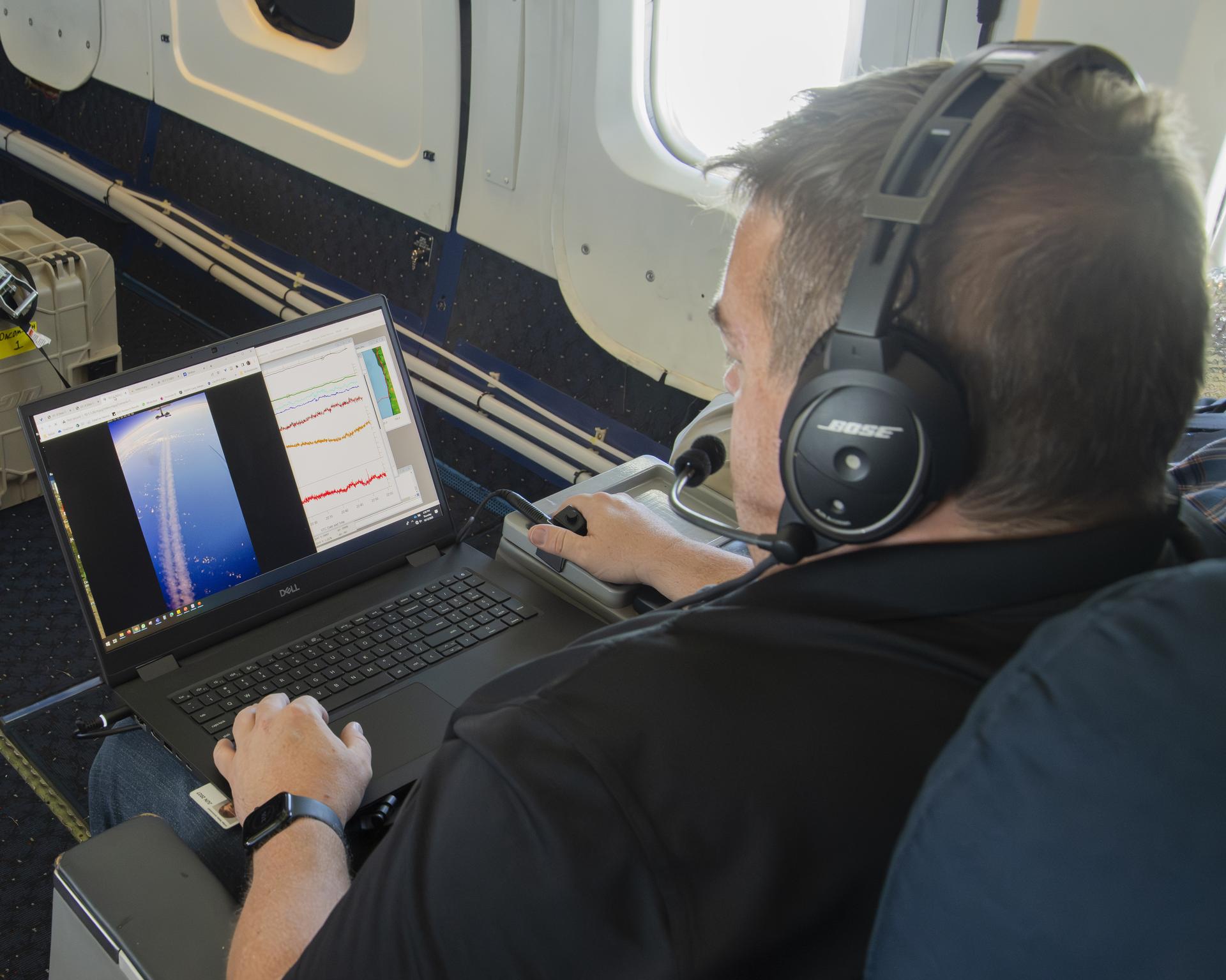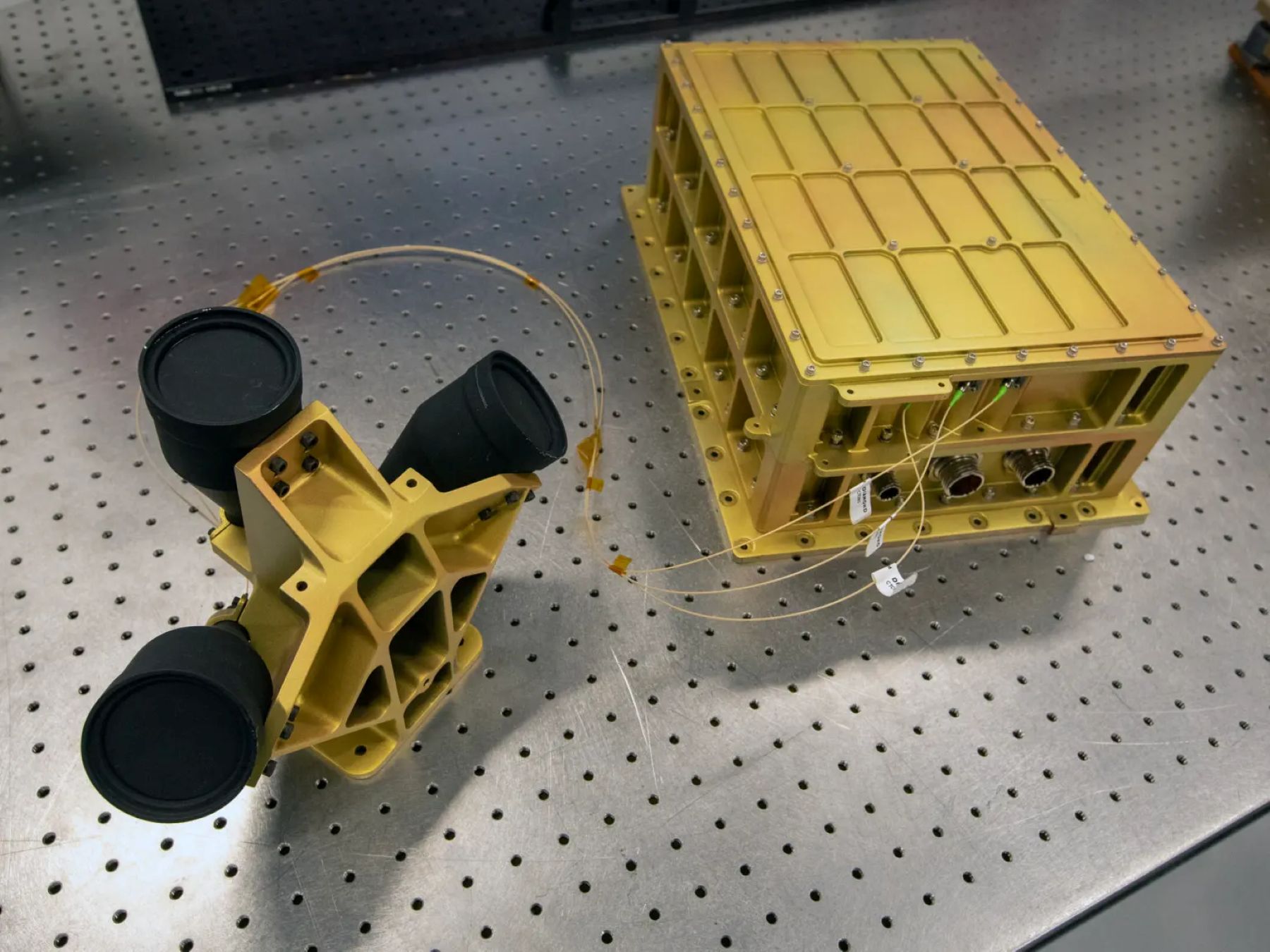NASA and Partners Study Contrail Formation

In a collaboration between multiple partners in the aviation industry, NASA is helping determine if the latest advances in aircraft engines and fuels can reduce atmospheric warming from condensation trails. Those condensation trails can trap heat in our atmosphere under specific conditions and increase the impact the aviation industry has on global warming.
NASA partnered with the Boeing ecoDemonstrator Explorer Program and others including General Electric Aerospace, the Federal Aviation Administration, the German Aerospace Center, United Airlines, and World Energy. Their goal was to see if sustainable aviation fuels and advanced engine technology can decrease contrail formation.

Rich Moore, NASA’s principal investigator for ecoDemonstrator, watches the livestream of footage from a camera located under the belly of the DC-8 on Oct. 10. The contrails from the Boeing plane are visible on his laptop monitor.
NASA / Jim Ross
In October, NASA Armstrong Flight Research Center’s DC-8 aircraft flew behind a Boeing ecoDemonstrator Explorer, a 737-10 passenger jet that the company plans to turn over to United Airlines, to capture and measure its emissions. Scientists outfitted the DC-8 with instruments to collect data that will compare the emissions from sustainable aviation fuel to the emissions from conventional jet fuel. In its fifth decade of flying science missions, the DC-8 is the largest flying science laboratory in the world and served as an ideal platform for experts from the Advanced Air Transport Technology project in NASA’s Advanced Air Vehicles Program, and other scientific partners.
Innovative technologies like sustainable aviation fuel and more efficient engine designs require state-of-the-art test models and exhaustive research methods performed by the most qualified experts in the world. That is what the ecoDemonstrator Explorer Program as a collaboration provided. Results from this collaborative study will be publicly available within a year to help the aviation sector improve its environmental impact worldwide.

NASA’s DC-8 overlooked the Cascade Mountain range in northwestern United States as it headed to Everett, Washington on Oct. 10 to conduct research on aircraft condensation trails. The white peak of Mount Rainier glows in the distance beyond a foggy mountain landscape.
NASA / Jim Ross





